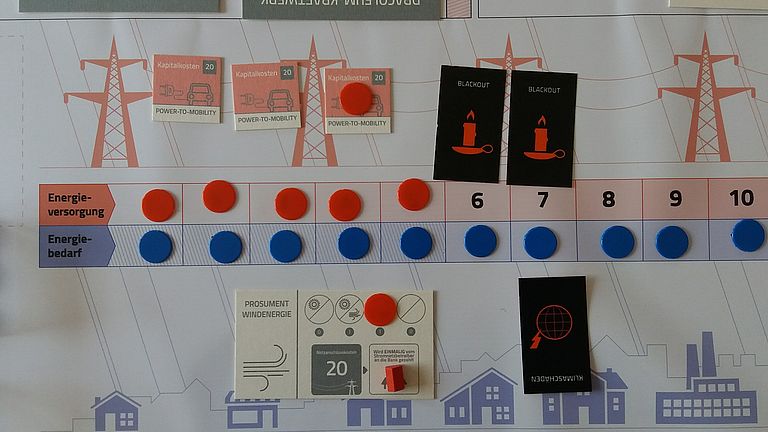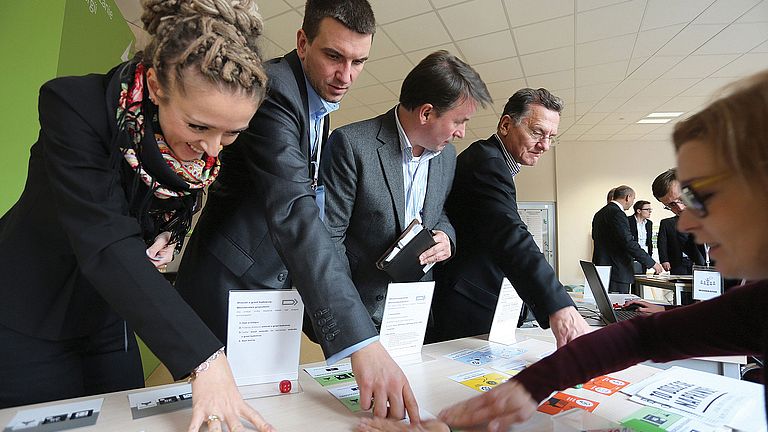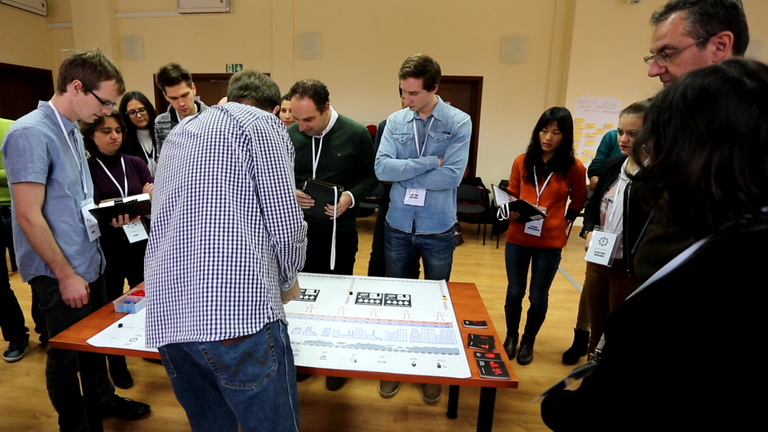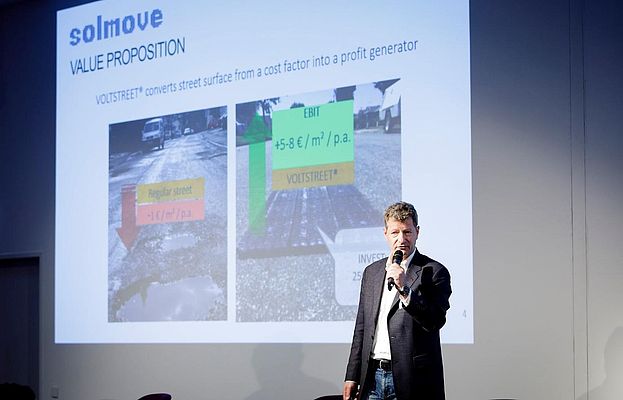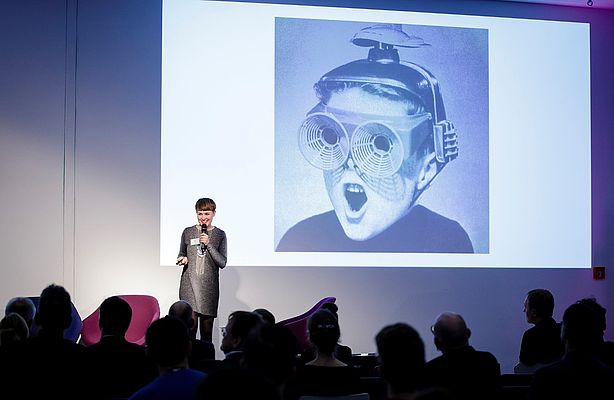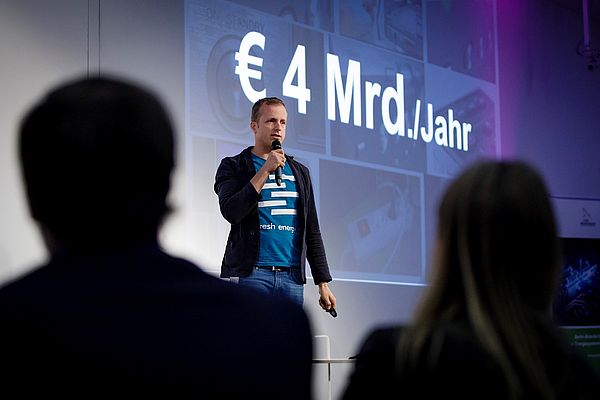After an ideas competition in 2018 and a cooperative role play with a change of perspective in 2019, a video competition was held in 2020 under the motto #60SEC_Energiewende. Applicants were invited to submit a video of a maximum 60 seconds on their vision of the energy system transformation.
The aim was to show why we need the energy transition, how we can promote it and how we can inspire and involve as many people as possible. Participants were allowed to use all thinkable creative measures. Whether feature movie or animation, whether documentary or science fiction. The same applied to the technical design; everything was allowed, from the use of the smartphone camera to professional equipment.
Until October 11th, a very diverse mix of submitted entries was gathered and evaluated by the WindNODE Challenge Jury, consisting of Ines Eckert (Stromnetz Berlin), Albert Heiser (Creative Game Institute), Dodo Vögler (Ellery Studio), Cosima Osang (WindNODE Project Management) and Wolfgang Korek (Berlin Partner for Business and Technology). The podium of the first-place winners reflects a colorful mixture of the submitted contributions.
Third place goes to the video contribution by Ole Svennsson and Lenz Wiechers, who created an analogy between the danger of driving a skateboard into a wall and dealing with the risk of doing the same with the energy transition.
Second place goes to Thorsten Biernath and Matthias Schiemann, who, with their dystopian vision, draw attention how the world could continue to change if a climate-political turnaround hand in hand with a comprehensive energy transition cannot be achieved soon.
The 1st place and thus winner of the WindNODE Challenge goes to the contribution of Mahmoud Draz and Lucas Choque with their Lego animation video "The real Energiewende", which was shot in stop-motion-technique and shows as a short (English-language) explanatory video how the energy and mobility supply of tomorrow can succeed if the energy transition is successfully implemented. The technical details, the appealing technical and visual realization and the use of the world-famous small Lego figures convinced the jury to award the 1st place to this contribution.
The winning clips can be seen here in a cut together:
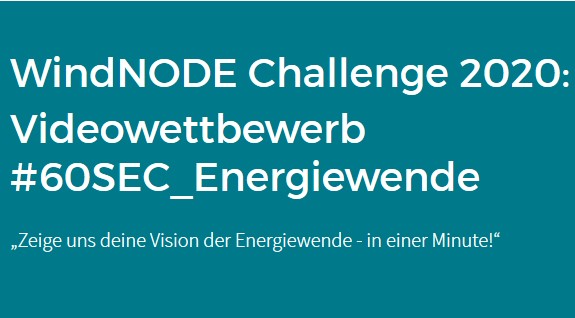
▶ Play
The YouTube video will only load and play after clicking. By clicking the video, you agree to Google's Privacy Policy.
Congratulations to all winners, thanks to all other participants for their efforts and submission of creative contributions. Last but not least, a big thank you to the jury and to both the Federal Ministry for Economic Affairs and Energy and the Project Management Jülich, without whom the format of the WindNODE Challenge 2020 would not have been possible.
To better understand the complexities of the energy transition and foster acceptance for the necessary transformation within society - these are important goals that have been stated by WindNODE. An interesting concept worth exploring are roleplaying games.
In 2019, the WindNODE Challenge enables a change in perspective by looking at the energy transition from an entirely different vantage point. 30 to 35 stakeholders ranging from WindNODE project partners to the wider public will play the "Energy Transition Game" - a roleplaying game set in the energy transition.
What is the Energy Transition Game?
The game is a playground that makes players bond together to experience and face the challenges that surround the shift from fossil fuels to renewable energy sources. An analogue roleplaying game as well as a computer simulation at the same time, the game invites players to take up roles such as energy producer, energy supplier, tech start-up, member of a public institution or an NGO in order to develop new solutions for the energy system. The challenge is to reconcile different goals. Energy prices, overall costs of the energy transition, energy demand, fierce competition or consumer satisfaction - these parameters are all influenced by the players' decisions.
Gameplay
Each role includes different responsibilities and offers various decisions to be made, allowing the players to develop their own strategies. An open setting for playing the game invites free player interaction, contract negotiations, crafting of new rules and laws and presenting out-of-the-box thinking and creative solutions. The game thus not only simulates the complexity of the energy transition in real life but also opens up space to try out innovative approaches.
Survey
A second aim is to find out how such games can contribute to the understanding of complex topics like the energy transition. Therefore, after the game has ended, a short survey among the participants will be carried out.
The Energy Transition Game was played on 24 October 2019 at the CityLABBerlin, Platz der Luftbrücke 4, 12101 Berlin.
The WindNODE Challenge depends a healthy mix of expert and public participation. We strive to increase the public interest and personal participation in the WindNODE showcase by establishing a competitive character. At the same time, the playful atmosphere will allow us to find more about learning games and roleplaying games as means of fostering acceptance for the energy transition.
In case of interest please contact us at windnode@berlin-partner.de.
At the cluster conference for energy technology of 2018, the Berlin Brandenburg Energy Technology Cluster honoured the winners of 2018’s WindNODE Challenge on 05/12/2018.
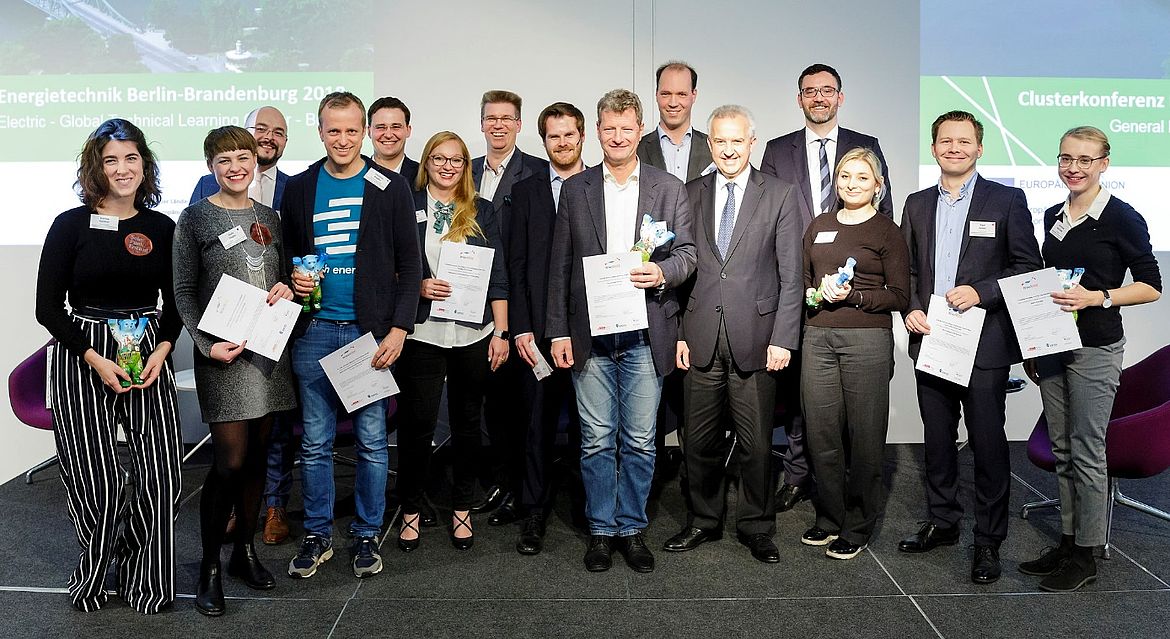
The WindNODE Challenge is an idea and technology contest organised by Berlin Partner for Business and Technology GmbH in the scope of WindNODE.
For the 2018 challenge, enthusiasts could compete with an innovative concept or solution proposal in one of four categories until May 2018:
- The public utility of the future
- Integration of electromobility
- Smart meters, and then?
- Enthusiasm for the energy transition.
The categories were phrased as assignments of the WindNODE partners ASEW, Stromnetz Berlin and TU Berlin (Department of Energy Systems).
The submission deadline was mid September 2018. 23 proposals were received. A jury selected six particularly interesting approaches that were demonstrated as five-minute presentations during a competition at the conference of the Berlin Brandenburg Energy Technology Cluster. The final decision was made on the spot by the public using voting cards.
The presentation competition was the culmination of the 2018 WindNODE Challenge. The guests of the cluster conference were able to witness a thrilling and definitely close final among innovative ideas and concepts. The first three places were rewarded for their efforts with prize moneys; all finalists also received an artistically painted Berlin Buddy Bear. The public chose Solmove GmbH as the victor, followed by Ellery Studio and Fresh Energy.
1st place: Solmove
Smart Solar Streets
This concerned a smart solar street that generates 100 kWh of clean electricity per square metre. Otherwise ‘wasted’ solar energy is ‘captured’ and put to use. The stable photovoltaic modules would revolutionise road construction, as the traffic roads would be used to generate power. The coating is applied to free surfaces, such as streets and roads, the generated electricity is fed into the grid or used immediately; electric cars could for instance be supplied with electricity while driving using combined inductive charging technology. The manager of Solmove, Donald Müller-Judex, brought along a piece of road coating material to show to the rows of viewers, whose curiosity had been piqued.
2nd place: Ellery Studio
Solar Punk Festival (SPF18)
In late August, SPF18 brought together 30 people, including NGO members, scientists, artists and students. Through scientific lectures, design thinking methods and futures studies, a walk-through installation was created over the course of the multiple-day gathering, dubbed the ‘Solar Capsule’. A sort of living capsule of the future, in which all objects of the room have an innovative function and are connected to each other by means of a root-like power grid. Solarpunk is a literary movement within the genre of science fiction, at the heart of which is a future that we deem desirable. Ellery Studio, which has dedicated itself to visual design, sustainable innovation and creative learning, creates opportunities and visuals, combines different disciplines and also makes laymen enthusiastic about the energy transition. Dodo Vögler won over the crowd with her varied presentation using images from films such as Star Wars and Blade Runner.
3rd place: Fresh Energy
Added values with smart meter data
Behind the screens of energy supplier Fresh Energy, you can find an app that analyses individual electricity consumption data provided by a smart meter using complex algorithms to show the customer how much electricity his devices use and how much this costs him every month. Through visualisation and the continuous flow of information, it is possible to save more than eight per cent of energy and therefore costs. The app can also launch order processes that keep the home appliances working smoothly. This enables them to provide their customers with data-driven added values through the use of smart meters. Fresh Energy’s manager, Dr Christian Bogatu, did not only convince the public with his business model, but also with his lively presentation in true science slam style.
In addition to the winners, there was a strong pool of other applicants. 4th place went to the SENSE faculty of TU Berlin with its concept for the ‘Smart.Grid App’. The 5th place was shared between the CHES/TU Dresden team, with its idea for ‘The Public Utility of the Future’ and FH Potsdam, with its ‘Innovative Charging Infrastructure Approach for Existing Properties’ using the example of the FH campus.
We would like to thank all participants once more for taking on the 2018 WindNODE Challenge.

